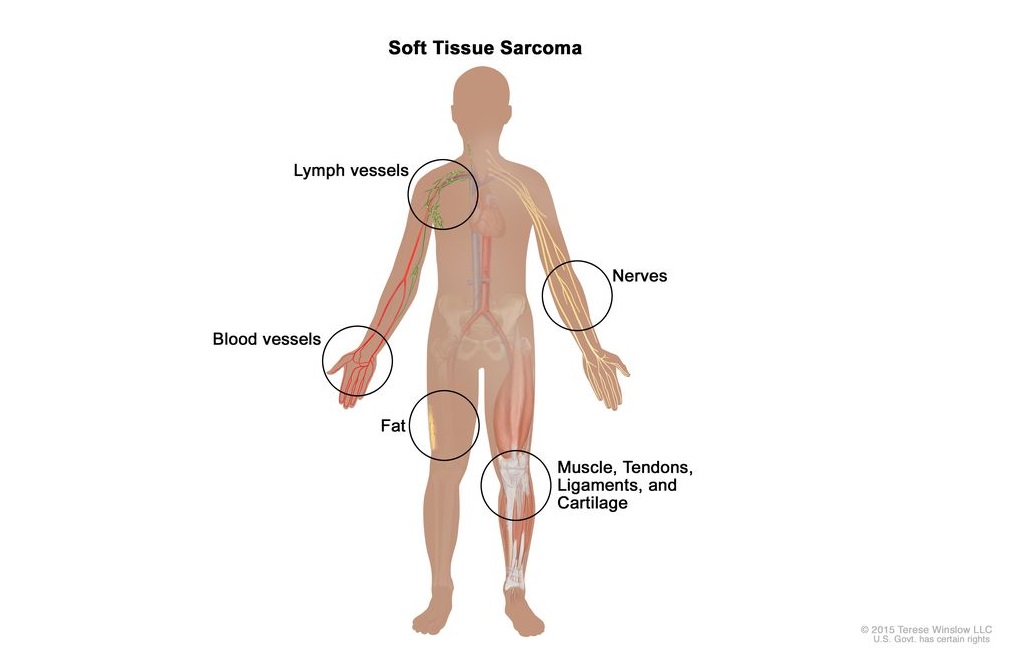
Skeletal Metastasis in Soft Tissue Sarcoma and its Diagnosis
- Post by: Zara Feroz
- February 25, 2021
- 2 Comments
This report will discuss about the skeletal metastasis in Soft Tissue Sarcoma (STS) and the available diagnostic techniques of it. Patients can be diagnosed through the use of bone scintigraphy, CT (computed tomography), whole body Magnetic Resonance Imaging (MRI) and Positron Emission Tomography (PET). The main factors involved in choosing an imaging modality are specificity, features, and cost of the equipment.
As the name suggests, STS occurs in soft tissues such as muscle, tendons, fat, lymph, blood vessels and nerves. Moreover, it is most commonly found in the arms, legs, chest, and abdomen. Bone metastasis occurs when cancer cells break away from the original tumor and spread to the bones, where they begin to multiply.
The spread of tumor cells and establishment of secondary areas of growth is called metastasis. Most malignant cells eventually acquire the ability to metastasis.
Although Soft Tissue Sarcoma (STS) account for less than 1% of human malignancies (malignancies occur when abnormal cells divide and spread without control), they still do occur. Soft Tissue Sarcomas are known to spread to the bloodstream.
Half of the Soft Tissue Sarcoma patients develop metastatic disease, which is when the cancer spreads to other organs and parts of the body, mostly the lungs. This occurs either through the bloodstream or the lymph system.
In a study conducted by Yoshikawal et al, it was found that 10% of STS patients developed skeletal metastasis. Thus we will examine it in more detail. Moreover, skeletal metastasis often leads to SREs (Skeletal related events), which refers to “common complications of bone metastases.” Please note that bone metastases are the area of metastatic growth.
It is important for doctors to manage a Soft Tissue Sarcoma patient’s skeletal metastasis as it can reduce the patient’s quality of life and worsen the chances of survival.
However, a positive outlook is that better imaging techniques have improved the diagnosis of bone metastasis.
Important Facts about Soft Tissue Sarcoma (STS) and Skeletal Metastases
- Alveolar soft-part sarcoma and dedifferentiated liposarcoma are two types of STS that have shown a higher likelihood of involving skeletal metastasis.
- Some common complications of bone metastases are spinal cord compression, the need for surgery and also radiotherapy to bone. These are the Skeletal related events or SREs.
- Thus, that’s why clinicians are urged to consider the management of SREs, even when the survival of the patient is unlikely. It can improve the patient’s standard of living, which is very important.
Skeletal Metastases and Bone Scintigraphy
Skeletal metastasis is when Soft Tissue Sarcoma spreads to the bones and several techniques can be applied to diagnose this kind of cancer and the most important is the bone scintigraphy. Bone scintigraphy must be used alongside FDG- PED in order to ensure accurate diagnosis and detection of the bone metastases. This is because bone scintigraphy is the most sensitive and cost effective method, but it is not that accurate.

Refer to the Archive section of Imaqpress.com for more simplified science articles like this one.